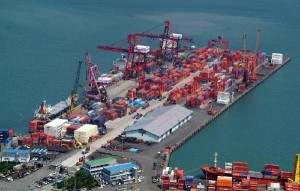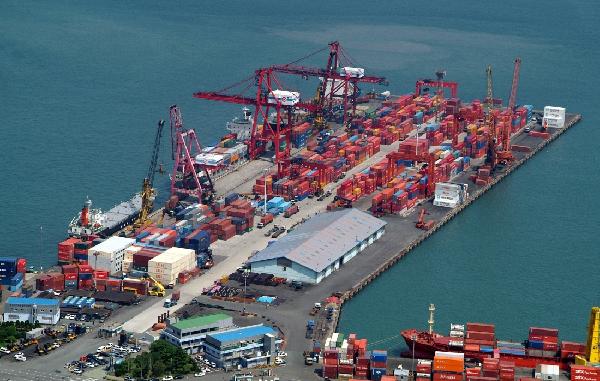 South Korea’s Busan Port experienced a cargo volume uptick of 4.8% in the first 10 months of the year despite the global economic slowdown, the growth propelled by rising transshipments, according to the Busan Port Authority (BPA).
South Korea’s Busan Port experienced a cargo volume uptick of 4.8% in the first 10 months of the year despite the global economic slowdown, the growth propelled by rising transshipments, according to the Busan Port Authority (BPA).
The port handled 16.255 million twenty foot equivalent units (TEUs) of containers from January to October this year, up by 744,000 TEUs over the same period last year, BPA president Woo Ye-jong stated.
He added that he expects the maritime gateway to hit its target for this year of more than 19 million TEUs.
For October, monthly transshipment volume hit a record 868,000 TEUs, a hike of 9.2% year-on-year. Transshipment cargo in the month broke the previous record of 855,000 TEUs logged in August, and allowed Busan to overtake Hong Kong in terms of cargo volume handled for the third time this year following February and March, said the agency.
In the same month, overall cargo volume reached 1.636 million TEUs, higher by 1.5% compared to the same period the preceding year. Transshipments contributed greatly to the total by accounting for a 53.1% share.
Considering that Hong Kong port processed 12.8% less volume in the same month at 1.592 million containers, “Busan Port regained its rank as the world’s fifth largest port after Shanghai, Singapore, Shenzhen, and Nongbo-Zhoushan by surpassing Hong Kong Port,” stated the authority.
It added that accumulated transshipment cargo volume since October 2013 has shown continued growth, expanding to 7.213 million TEUs in 2013, then 7.821 million TEUs in 2014, and 8.550 million TEUs in 2015.
In addition, the transshipment ratio to total cargo volume has also been on an uptrend—from 49.2% in 2013 and 50.5% last year to 52.% this year.
“These figures prove the validity of the promotion policy, recently released by MOF, for Busan Port being the world’s 2nd largest T/S hub,” claimed BPA.
As of October 2015, the port’s transshipment cargo by nation was led by China with 2.688 million TEUs. Following behind it are the U.S. (1.247 million TEUs), Japan (1.23 million TEUs), and Europe (435,000 TEUs), posting increases of 13%, 19.9%, 0.6%, and 5.8%, respectively, year-on-year.
Woo said, “Despite the long term global recession, we expect to achieve our goal of 19.5 million TEU this year. We will maintain our ranking as the world’s fifth largest port next year if the growing trend continues and cargo volume at Hong Kong Port continues to decrease.”





